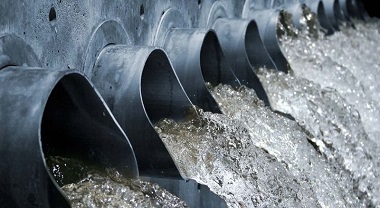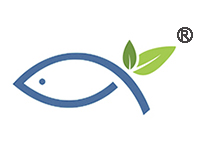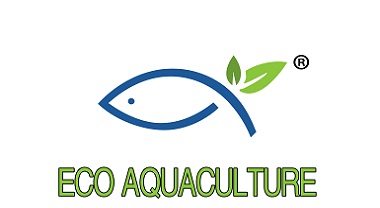Industry News
Exploring Useful Aquaculture Tools WIth Ecowater
Views : 160
Author : ECOWATER AQUA
Update time : 2023-09-05 17:53:00
Exploring Useful Aquaculture Tools With Ecowater

The use of automatic fish feeding equipment in fisheries production is becoming more frequent as the aquaculture sector evolves. With their broad and equal distribution of feed, these devices enable fish feeding, improve feed consumption, and reduce feed waste. We will now present a quick summary of key knowledge to assist fish farmers in more efficiently selecting and utilizing these feeding equipment.
I. Fish Feeding Machine Types and Components
I. Fish Feeding Machine Types and Components
Automatic fish feeding machines are classified into three varieties based on their intended applications: those built for small water bodies, those for net cages, and those for general pond use. The feed hopper, feed-dispensing mechanism, distribution device, and controller are the four basic components, with the fundamental distinction being in the distribution mechanism.
Feed Hopper: Feed hoppers are typically constructed of white or black iron sheet. Because of their easy production technique, white iron sheets are less expensive, but they have thinner metal and lesser strength. Black iron sheets, on the other hand, are thicker and require specific equipment for processing, such as bending, welding, and painting. Products constructed of black iron sheets are more visually beautiful and durable, although they are slightly more expensive.
Feed-Dispensing Mechanism: Feed-dispensing mechanisms are classified into three types: (1) Screw-propelled, which has a complicated construction and significant expenses and is currently rarely utilized; (2) Vibrating, in which an electric motor drives a camshaft, which moves a slide bar to vibrate the feed gate, a simpler design but still requiring an electric motor and being quite costly and difficult to repair; (3) Electromagnetic drop-type, consisting of an electromagnetic coil, a feed gate, and a feed gate size plate that can be adjusted. When the electromagnetic coil is activated, it attracts and pushes down the feed gate, allowing feed to flow. When the power is turned off, the spring restores the feed gate to its original position, thus terminating the feed. This mechanism is the most extensively employed in current fish feeding machines because it is simple, sturdy, cost-effective, and easy to maintain, and its components are easily accessible.
Distribution Device: Distribution devices are classified into numerous categories based on the intended purpose of the fish feeding machine: (1) Non-powered distribution, in which feed falls from the feed gate and is broken up by a conical feed scatter plate below. (2) Powered distribution utilizes pipes and high-speed airflow to deliver feed to the feeding point, with an obstruction at the exit causing feed to disperse upon impact. This kind is appropriate for specialized situations such as net cage farming or industrial aquaculture; (3) Powered distribution, which is the most often employed type, particularly in pond aquaculture.These motors are available in both high-speed and low-speed configurations. Because of their increased velocity, high-speed motors create more force upon contact with the revolving disc, resulting in higher feed breakage rates. As a result, low-speed motors are commonly used and adapted to different pond areas by employing discs of variable sizes. This procedure guarantees that feed is distributed evenly and with little breakage.
Controller: Timing and interval control are the basic duties of controllers. Timing feature automatically stops feeding when a certain amount of time has passed since the machine was turned on. Interval control specifies when the feed gate should open and close during feeding, repeating the operation till the timer runs out. Mechanical timing, electrical timing, and the most recent controllers based on microcontrollers (single-chip microprocessors) are the three types of controllers. Single-chip microcontroller-based controllers provide accurate timing, configurable intervals, and intelligence. They can, for example, automatically modify interval and feed lengths a few minutes before and after the start and end of feeding to account for variations in the number of feeding fish, hence decreasing feed waste. Furthermore, single-chip microcontrollers can program and execute all feeding regimens for each day. They may automatically cease feeding and send a warning if the feed hopper runs out of feed. Controllers based on single-chip microprocessors are the future development path.
Feed Hopper: Feed hoppers are typically constructed of white or black iron sheet. Because of their easy production technique, white iron sheets are less expensive, but they have thinner metal and lesser strength. Black iron sheets, on the other hand, are thicker and require specific equipment for processing, such as bending, welding, and painting. Products constructed of black iron sheets are more visually beautiful and durable, although they are slightly more expensive.
Feed-Dispensing Mechanism: Feed-dispensing mechanisms are classified into three types: (1) Screw-propelled, which has a complicated construction and significant expenses and is currently rarely utilized; (2) Vibrating, in which an electric motor drives a camshaft, which moves a slide bar to vibrate the feed gate, a simpler design but still requiring an electric motor and being quite costly and difficult to repair; (3) Electromagnetic drop-type, consisting of an electromagnetic coil, a feed gate, and a feed gate size plate that can be adjusted. When the electromagnetic coil is activated, it attracts and pushes down the feed gate, allowing feed to flow. When the power is turned off, the spring restores the feed gate to its original position, thus terminating the feed. This mechanism is the most extensively employed in current fish feeding machines because it is simple, sturdy, cost-effective, and easy to maintain, and its components are easily accessible.
Distribution Device: Distribution devices are classified into numerous categories based on the intended purpose of the fish feeding machine: (1) Non-powered distribution, in which feed falls from the feed gate and is broken up by a conical feed scatter plate below. (2) Powered distribution utilizes pipes and high-speed airflow to deliver feed to the feeding point, with an obstruction at the exit causing feed to disperse upon impact. This kind is appropriate for specialized situations such as net cage farming or industrial aquaculture; (3) Powered distribution, which is the most often employed type, particularly in pond aquaculture.These motors are available in both high-speed and low-speed configurations. Because of their increased velocity, high-speed motors create more force upon contact with the revolving disc, resulting in higher feed breakage rates. As a result, low-speed motors are commonly used and adapted to different pond areas by employing discs of variable sizes. This procedure guarantees that feed is distributed evenly and with little breakage.
Controller: Timing and interval control are the basic duties of controllers. Timing feature automatically stops feeding when a certain amount of time has passed since the machine was turned on. Interval control specifies when the feed gate should open and close during feeding, repeating the operation till the timer runs out. Mechanical timing, electrical timing, and the most recent controllers based on microcontrollers (single-chip microprocessors) are the three types of controllers. Single-chip microcontroller-based controllers provide accurate timing, configurable intervals, and intelligence. They can, for example, automatically modify interval and feed lengths a few minutes before and after the start and end of feeding to account for variations in the number of feeding fish, hence decreasing feed waste. Furthermore, single-chip microcontrollers can program and execute all feeding regimens for each day. They may automatically cease feeding and send a warning if the feed hopper runs out of feed. Controllers based on single-chip microprocessors are the future development path.
II. Fish Feeding Machine Selection and Use
Fish Feeding Machine Selection: First, the feeding machine should be selected based on the aquaculture method being used. Second, evaluate the characteristics of feeding machines that are compatible with your financial situation, preferring machines with complete functionality wherever feasible. Third, while selecting a pond, consider the size of the pond as well as the estimated fish production. It is not a matter of choosing the machine with the fastest motor, the longest feeding distance, or the greatest covering area. Instead, the decision should be made depending on the current pond circumstances.For example, the best feeding distance in ponds ranging from 0.201 to 0.335 hectares with a fish production of around 1500 kilos per 0.067 hectares is normally between 5 and 8 meters. Excessive feeding distance might result in waste of feed at the pond's margins. As a result, selecting the right feeding machinery has a direct influence on feed usage. To decrease feed waste, change the feeding volume quickly during feeding depending on fish feeding behavior. Consider aspects such as cage size, stocking density, and fish amount when selecting feeding equipment for net cages.
Fish Feeding Machine Use: Before installing and operating a feeding machine, read the user manual completely to understand appropriate voltage, wiring techniques, and safety precautions. If more information is required, contact the distributor. Second, because feeding machines are frequently used near water surfaces, maintain electrical safety by performing regular inspections and preventing electrical leaks and power outages. Third, closely monitor changes in weather, water temperature, water quality, and fish eating behavior during the production management process. Adjust the feeding machine settings accordingly to ensure that the fish receive appropriate feed without waste. Fourth, if the feeding machine fails, immediately contact the manufacturer (or distributor). To avoid risk and development of the problem, avoid disassembling the equipment on your own.
Fish Feeding Machine Use: Before installing and operating a feeding machine, read the user manual completely to understand appropriate voltage, wiring techniques, and safety precautions. If more information is required, contact the distributor. Second, because feeding machines are frequently used near water surfaces, maintain electrical safety by performing regular inspections and preventing electrical leaks and power outages. Third, closely monitor changes in weather, water temperature, water quality, and fish eating behavior during the production management process. Adjust the feeding machine settings accordingly to ensure that the fish receive appropriate feed without waste. Fourth, if the feeding machine fails, immediately contact the manufacturer (or distributor). To avoid risk and development of the problem, avoid disassembling the equipment on your own.
Automatic fish feeding devices are popular among fisherman due to their time-saving and labor-saving qualities; nevertheless, they must be operated appropriately or the advantages may not exceed the expenses.
So, how can farmers endeavor to make good use of autonomous feeding machines?
So, how can farmers endeavor to make good use of autonomous feeding machines?
To begin, while installing a feeding machine, select a place that faces the open region of the fish pond to provide a wide feeding range. Furthermore, the water level should be deep enough to allow fish to compete for food successfully. Consider employing a shared movable base and adjusting the direction as needed if you have numerous neighboring ponds. Make careful to set the feeding distance and interval time accurately.
Second, it is recommended to perform one manual feeding day every week and record the amount of bait consumed each time. Determine the feeding volume for the following week based on the previous week's data, and avoid making arbitrary increases or decreases. In most cases, adjusting the feeding volume once a week is sufficient.
Additionally, avoid feeding during wet or cloudy weather conditions. When feeding fish using the feeding machine, pay close attention to the fish's feeding behavior. Inspect the feeding tray's bottom for any bait remnants during the monthly thorough pond cleaning. Avoid starting the machine immediately after adding bait since fish may eat differently at the start and conclusion of feeding. If the machine continues to discharge bait regardless of the feeding behavior of the fish, the bait may fall to the bottom, resulting in waste and deterioration of water quality.
Second, it is recommended to perform one manual feeding day every week and record the amount of bait consumed each time. Determine the feeding volume for the following week based on the previous week's data, and avoid making arbitrary increases or decreases. In most cases, adjusting the feeding volume once a week is sufficient.
Additionally, avoid feeding during wet or cloudy weather conditions. When feeding fish using the feeding machine, pay close attention to the fish's feeding behavior. Inspect the feeding tray's bottom for any bait remnants during the monthly thorough pond cleaning. Avoid starting the machine immediately after adding bait since fish may eat differently at the start and conclusion of feeding. If the machine continues to discharge bait regardless of the feeding behavior of the fish, the bait may fall to the bottom, resulting in waste and deterioration of water quality.
Next :
WWTP Aeration Gamer Changer
Related News

WWTP Aeration Gamer Changer
Aug .11.2023
The rotary aerator introduces gas through the rotating flow of liquid, creating turbulence and vortices that distribute the gas into microscopic bubbles. This aerator excels in gas-liquid mixing and liquid agitation. Rotary aerators are extensively used i

Navigating Indonesia's Aquaculture with Ecowater
Aug .03.2023
Ecowater had the honor of taking part in a spectacular excursion to Indonesia, with the goal of learning more about the country's shrimp farming sector and discovering new potential for shrimp company development.



